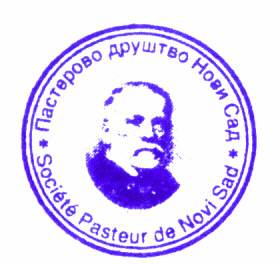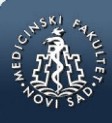md-medicaldata
Main menu:
- Naslovna/Home
- Arhiva/Archive
- Godina 2024, Broj 1
- Godina 2023, Broj 3
- Godina 2023, Broj 1-2
- Godina 2022, Broj 3
- Godina 2022, Broj 1-2
- Godina 2021, Broj 3-4
- Godina 2021, Broj 2
- Godina 2021, Broj 1
- Godina 2020, Broj 4
- Godina 2020, Broj 3
- Godina 2020, Broj 2
- Godina 2020, Broj 1
- Godina 2019, Broj 3
- Godina 2019, Broj 2
- Godina 2019, Broj 1
- Godina 2018, Broj 4
- Godina 2018, Broj 3
- Godina 2018, Broj 2
- Godina 2018, Broj 1
- Godina 2017, Broj 4
- Godina 2017, Broj 3
- Godina 2017, Broj 2
- Godina 2017, Broj 1
- Godina 2016, Broj 4
- Godina 2016, Broj 3
- Godina 2016, Broj 2
- Godina 2016, Broj 1
- Godina 2015, Broj 4
- Godina 2015, Broj 3
- Godina 2015, Broj 2
- Godina 2015, Broj 1
- Godina 2014, Broj 4
- Godina 2014, Broj 3
- Godina 2014, Broj 2
- Godina 2014, Broj 1
- Godina 2013, Broj 4
- Godina 2013, Broj 3
- Godina 2013, Broj 2
- Godina 2013, Broj 1
- Godina 2012, Broj 4
- Godina 2012, Broj 3
- Godina 2012, Broj 2
- Godina 2012, Broj 1
- Godina 2011, Broj 4
- Godina 2011, Broj 3
- Godina 2011, Broj 2
- Godina 2011, Broj 1
- Godina 2010, Broj 4
- Godina 2010, Broj 3
- Godina 2010, Broj 2
- Godina 2010, Broj 1
- Godina 2009, Broj 4
- Godina 2009, Broj 3
- Godina 2009, Broj 2
- Godina 2009, Broj 1
- Supplement
- Galerija/Gallery
- Dešavanja/Events
- Uputstva/Instructions
- Redakcija/Redaction
- Izdavač/Publisher
- Pretplata /Subscriptions
- Saradnja/Cooperation
- Vesti/News
- Kontakt/Contact
 Pasterovo društvo
Pasterovo društvo
- Disclosure of Potential Conflicts of Interest
- WorldMedical Association Declaration of Helsinki Ethical Principles for Medical Research Involving Human Subjects
- Committee on publication Ethics
CIP - Каталогизација у публикацији
Народна библиотека Србије, Београд
61
MD : Medical Data : medicinska revija = medical review / glavni i odgovorni urednik Dušan Lalošević. - Vol. 1, no. 1 (2009)- . - Zemun : Udruženje za kulturu povezivanja Most Art Jugoslavija ; Novi Sad : Pasterovo društvo, 2009- (Beograd : Scripta Internacional). - 30 cm
Dostupno i na: http://www.md-medicaldata.com. - Tri puta godišnje.
ISSN 1821-1585 = MD. Medical Data
COBISS.SR-ID 158558988
TALOŽENJE ARSENA U ORGANIMA EKSPERIMENTALNOG MODELA MUŽJAKA MIŠEVA EKSPONIRANIH MAKSIMALNOJ KONCENTRACIJI EKVIVALENTNOJ U VODOVODNOJ MREŽI BANATA
/
DEPOSITION OF ARSENIC IN THE ORGANS OF AN EXPERIMENTAL MODEL OF MALE MICE EXPOSED TO THE MAXIMUM CONCENTRATION EQUIVALENT TO THE WATER SUPPLY NETWORK OF BANAT
Authors
Anita Birinji1, Željko Mihaljev2, Dušan Lalošević3, Marija Marin1
UDK: 615.9:546.19 The paper was received / Rad primljen: 01.12.2021. Accepted / Rad prihvaćen: 01.06.2022. Sažetak Prisustvo arsena u životnoj sredini predstavlja ozbiljan zdravstveni problem. Na teritoriji Srbije najviše je prisutan u Vojvodini. Postavili smo eksperimentalni model izloženosti arsena u vodi za piće kroz tri generacije miševa. Koncentracija arsena je određena prema formuli za preračunavanje vrednosti kojima mogu biti izloženi ljudi u vodovodu Banata na animalni model. Postavljene su dve grupe miševa eksponiranih arsen (III)-oksidu od 10,6 mg/L i deset puta veća, 106 mg/L. U radu su prikazani rezultati sadržaja ukupnog arsena deponovanog u organima mužjaka miševa (jetra, bubrezi, testisi, mozak) praćeni kroz tri uzastopne generacije. Rezultati ukazuju da se arsen taloži u organima i da sadržaj ukupnog arsena tokom generacija ne opada. Nisu registrovane promene u aktivnosti miševa, ishrani, ni većem gubitku telesne težine. Nema registrovanih tumoroznih promena na spoljašnjoj i unutrašnjoj građi tela. Nisu zabeležena masovna uginuća životinja tokom ogleda.
Ključne reči: arsen(III)-oksid, miševi, eksperimentalni model. Abstract arsenic(III)-oxide, mice, experimental model. References: PDFBirinji A. et al. MD-Medical Data 2022;14(1-2): 041-044
1Univerzitet u Beogradu, Biološki fakultet, Studentski trg 16, 11000 Beograd
2Naučni institut za veterinarstvo ,,Novi Sad”, Rumenački put 20, 21113 Novi Sad, Srbija
3Univerzitet u Novom Sadu, Medicinski fakultet i Pasterov zavod Novi Sad, Hajduk Veljkova 1, 21000 Novi Sad, Srbija
616-099:546.19
Correspondence to:
Birinji Anita
e-mail: ani.birinji@gmail.com
The presence of arsenic in the environment is a serious health problem. On the territory of Serbia, it is most present in Vojvodina. We set up an experimental model of arsenic exposure in drinking water through three generations of mice. The concentration of arsenic was determined according to the formula for converting the values to which people can be exposed in the Banat water supply system to the animal model. Two groups of mice exposed to arsenic (III)-oxide of 10.6 mg/L and ten times higher, 106 mg/L, were placed. The paper presents the results of the content of total arsenic deposited in the organs of male mice (liver, kidneys, testicles, brain) followed through three consecutive generations. The results indicate that arsenic is deposited in organs and that the content of total arsenic does not decrease over generations. No changes were registered in the mice's activity, diet, or significant loss of body weight. There are no registered tumorous changes on the external and internal structure of the body. No mass deaths of animals were recorded during the experiment.
Key words:Mandal BK, Ogra Y, Anzai K, Suzuki KT. Speciation of arsenic in biological samples. Toxicol Appl Pharmacol 2004; 198: 307-18.
Kristoforović-Ilić M. Arsenic. Medicinski Pregled 2004,57 (7-8), 319-322.
 Medicinski fakultet
Medicinski fakultet